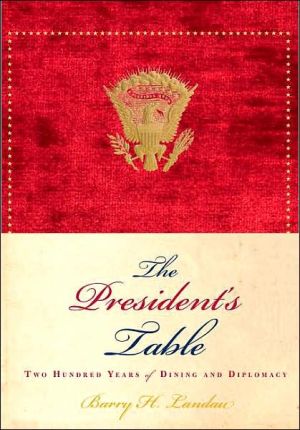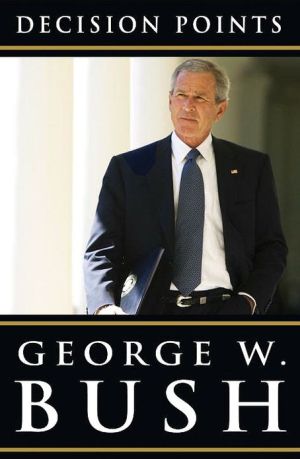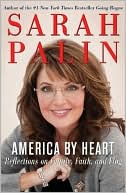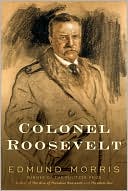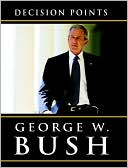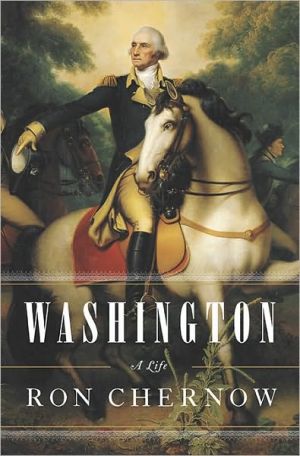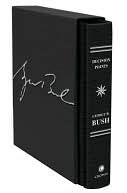President's Table: 200 Years of Dining and Diplomacy
The President's Table offers a sweeping visual history of the American Presidency as seen through Presidential entertaining from George Washington to George W. Bush.\ In this lavishly illustrated history of Presidential dining, historian Barry Landau brings the backstory of the American Presidency to life. Interweaving stories of dining and diplomacy, he creates a spellbinding narrative from the early days of provincial entertaining in the capital, through the golden era of sumptuous state...
Search in google:
THE PRESIDENT'S TABLE: 200 Years of Dining & Diplomacy, by Barry H. Landau, is a sweeping visual history of the American Presidency, as seen through Presidential entertaining from George Washington to George W. Bush. Landau is a presidential historian and one of the foremost collectors of presidential memorabilia and artifacts. He has served eight Presidents and worked with every White House since Lyndon Johnson planning historic events, and has been a frequent network commentator on matters relating to the Presidency and White House protocol. In this lavishly illustrated history of Presidential dining, Landau brings the back-story of the American Presidency to life. Interweaving stories of dining and diplomacy, he creates a spellbinding narrative from the early days of provincial entertaining in the capital, through the golden era of sumptuous state banquets, to the modern White House dinners of today. For the very first time, THE PRESIDENT'S TABLE will present the names of every Presidential and White House chef, cook, chief usher and steward. The book will take the reader inside the White House kitchens and reveal an exclusive first time glimpse into the President's personal refrigerator. The magnificent menus and invitations shown on the pages of this book are true works of art done on silk, leather, copper, silver and gold. Landau's collection presented in this unique manner for the first time acknowledges the printers, engravers, and artists who masterfully designed the art of the President's table. With more than 300 never before seen illustrations from Landau's personal collections, THE PRESIDENT'S TABLEprovides an insightful and entertaining look at our dining habits as the nation grew through social and economic change. The book reveals the parallel growth of the United States and its Chief Executives and the diplomatic and political interests served along with Presidential meals. "Landau moves on the axis that spins between Washington, New York, and Hollywood," says Larry Bird, a curator at the Smithsonian's National Museum of American History, "using his social connections to build the most extensive collection of Presidential memorabilia outside of the Smithsonian, the National Archives or the Presidential libraries."THE PRESIDENT'S TABLE will fascinate anyone with an interest in American history and politics. Washington Post “[Landau’s] connections bridge the world of politics, entertainment and theatre….and built a network of the powerful and famous, creating a niche as a liaison between the world of politics and entertainment.”
The President's Table\ Two Hundred Years of Dining and Diplomacy \ \ By Barry H. Landau \ HarperCollins Publishers, Inc.\ Copyright © 2007 Barry H. Landau\ All right reserved.\ ISBN: 9780060899103 \ \ \ Chapter One\ George Washington through Abraham Lincoln\ 1789-1865\ Salon society to people's table\ At times it seemed as if the new president's mansion would never be built. Its original conception owed much to the stately vision of George Washington and his favorite federalist architect, Pierre L'Enfant, who had transformed New York City's old city hall into the noble, neoclassical federal hall, seat of the first united states government under the constitution of 1788. L'enfant selected a site and laid out an entire city along the border separating Maryland and Virginia, near the confluence of the Potomac and Anacostia rivers. Unfortunately the grandiose, extravagant promise of the new federal district was impractical given conditions in 1791 and 1792. It also ran counter to the ideals of "republican simplicity" championed by secretary of state Thomas Jefferson, who was granted supervisory powers over completion of the new "palace." L'Enfant had a gift for making enemies. When he was dismissed in early 1792, nothing more than a cellar had been excavated on the chosen spot. A year later, James Hoban, an Irish architect who had recently established himself inthe United States, won the competition to build the new president's house. Eight more years would drag by before any president could even contemplate moving in.\ During the first sixteen months of Washington's presidency, he and his wife Martha lived in New York City and then Philadelphia when the nation's capital was moved there. As the new nation's first President, Washington was intensely concerned with the formal precedents he set at social and official functions. For that reason, he never dined outside his own residence in New York City except perhaps for a meal with Governor George Clinton on the day of Washington's triumphal arrival. After consultations with top advisors, Washington declared Tuesday his day for "levees" (receptions), and Thursday his day for dinner with members of Congress. Martha Washington would hold separate receptions on Fridays, while state banquets might happen on any day.\ Washington employed "Black Sam" Fraunces, the West Indian owner of the New York tavern where Washington had bid farewell to his troops, as his steward and head of kitchen. A series of other cooks were hired in the first few years, but none of them quite worked out. Finally, the Washingtons decided to import their black slave Hercules from Mount Vernon to provide some continuity in the kitchen, although periodically they had to ship him back to Virginia to circumvent a recent Pennsylvania law that gave slaves their freedom after six months' residence. As for the first President's appetites, he was said to like fish particularly, and have a nostalgic fondness for Pennsylvania Dutch cooking (including Philadelphia pepper pot) from the days of his military campaigns.\ Dinner time in the early years of the Republic was usually three or four in the afternoon. The meals were typically composed of three bountiful courses. The first and second featured at least a dozen different dishes brought to the table simultaneously; soup and fish or shellfish were usually included in the first, while game and desserts were part of the second. Tablecloths and glassware were changed between the first and second courses and removed entirely for the third course, which consisted mostly of an assortment of fruits and nuts. The company was almost exclusively men, although Martha Washington sometimes joined them as wife of the host, as did occasionally other women.\ Extended silences and often stiff formality were typical of the levees, republican adaptations of similar European ceremonies in which courtiers presented themselves to their aristocratic superiors. In this manner, President Washington would establish himself in front of the fireplace. As officials or diplomats were announced, they took their places in a circular receiving line. The President would approach each man, bow slightly (shaking hands was considered too familiar), make a few remarks, and return to his place of honor. Here he continued standing until an aide signaled. One by one, each man would then approach the President, bow, and leave the room. The central room in the future Presidential residence (today's Blue Room) is thought to have been given an oval shape so that such circular levees could be more graciously accommodated.\ Social events hosted by Washington's Vice President and successor, John Adams, were less elaborate than Washington's. Adams's Puritan heritage, the plainer cuisine of his native New England, and his lack of fortune and slaves led to meals with fewer and more basic dishes: Indian pudding, mutton, veal, peas, fried oysters, cabbage pudding, and gooseberry fool. Almost all descriptions of more fanciful repasts in Adams's extensive writings concern meals at which he was a guest, not the host.\ When they moved to Washington City, a city "only so in name," according to Abigail Adams, the Adamses felt obliged to stage several major receptions and offer as much other hospitality as they could—although they received no allowance for doing so, had few servants, and little money. The immense, unfinished mansion lay in the middle of a weed-infested, rubble-strewn expanse of mud and grass. The Presidential couple had to make do with a single service staircase and an outdoor privy. Mrs. Adams hung her laundry in the huge parlor that would eventually become the East Room. Members of Congress arrived in a rainy downpour at the end of November, 1800 for the first congressional reception ever, held in the great entrance hall. Refreshments were prepared and served by John and Esther Briesler, the Adamses' longtime servants. On January 1, 1801, President Adams held a New Year's Day reception at the President's House—inaugurating a tradition that would hold for well over a century. By then, the Federalist Adams had learned the disappointing results of the 1800 election, and knew he would be vacating the "castle," as his wife Abigail called it, only four months after moving in.\ Thomas Jefferson was the beneficiary of the "republican revolution" of 1800 that spelled the eventual demise of the Federalists and their "pseudo-monarchical" pretensions. Although he . . .\ \ \ Continues... \ \ \ \ Excerpted from The President's Table by Barry H. Landau Copyright © 2007 by Barry H. Landau. Excerpted by permission.\ All rights reserved. No part of this excerpt may be reproduced or reprinted without permission in writing from the publisher.\ Excerpts are provided by Dial-A-Book Inc. solely for the personal use of visitors to this web site. \ \
\ Washington Post"[Landau’s] connections bridge the world of politics, entertainment and theatre….and built a network of the powerful and famous, creating a niche as a liaison between the world of politics and entertainment."\ \ \ \ \ Arthur Schlesinger"Barry Landau weaves these previously missing links of Presidential history into a fascinating tapestry and narrative of Presidential lore."\ \ \ Henry Kissinger"Landau escorts the reader to the Head Table...and provides a social history that is great fun to read."\ \ \ \ \ Mike Wallace"Brings to life an intriguing backstory of the American Presidency....[A] unique perspective on American history and presidential politics."\ \ \ \ \ Washington Post“[Landau’s] connections bridge the world of politics, entertainment and theatre….and built a network of the powerful and famous, creating a niche as a liaison between the world of politics and entertainment.”\ \ \ \ \ Library JournalAn avid collector and student of the realia of presidential history, Landau offers up reproductions of hundreds of pieces from his own collection of menus and related artifacts documenting presidential entertaining at the White House, from the first George to the current one. The rich narrative and illustrations result in an opulent and intimate approach to presidential history by a man who has consulted on matters of protocol and entertaining with many presidents. The book is divided into three parts: Washington to Lincoln, Andrew Johnson to McKinley, and Theodore Roosevelt to George W. Bush. Each president receives his own chapter, offering highlights of the dining and the diplomacy that took place hand in hand. The result is an eclectic and novel look at our chief executives and the evolving trends in presidential protocol and politics-not to mention the food! While the book is fascinating and visually appealing-the customized menus for White House dinners have always been special, and here Landau cites their artists, engravers, and printers-its greater appeal will be as a coffee-table offering than a history book: historians will be frustrated by the lack of notes or an index. The book does include a list of suggested further reading, however, as well as a full compilation-apparently the first ever- of all presidential chefs, cooks, chief ushers, and stewards. Recommended for public libraries.\ —Lisa A. Ennis\ \ \
